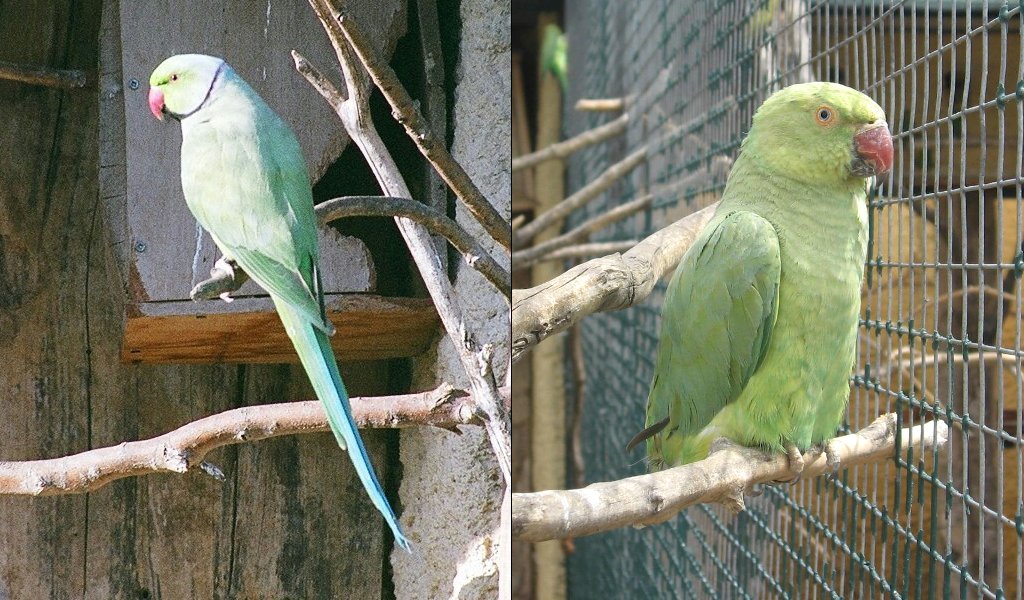

Psittacula krameri (left: male; right: female)
This is one of few parrot species that have successfully adapted to living in habitats disturbed by urbanization and deforestation. There are four subspecies, all of them similar. The two African subspecies occur in the Sudan belt of Africa. The two Asian subspecies breed in the Indian subcontinent and Nepal, and there are feral populations in other regions of the world.
The females and juveniles lack the black stripe around the neck, which appears in adult males.
In the wild, Rose-ringed Parakeets usually feed on buds, fruits, vegetables, nuts, berries and seeds.
These birds where first bred by the people of India at least 3,000 years ago. The royals prized them as pets and for their ability to speak, and it was a popular status symbol in Indian culture to have a Rose-ringed Parakeet. They were also the first parrots brought to Europe and the Greeks were the first Europeans to breed them. The Romans then bred them for pets, and for their beauty in their aviaries. The Rose-ringed Parakeet is considered one of the best talking parakeets.
The above pictures were taken in the Attica Zoological Park, Athens, Greece, in June 2007.
Genus Psittacula
Tribe Psittaculini
Subfamily Psittacinae
Family Psittacidae
Order Psittaciformes
Class Aves
Subphylum Vertebrata
Phylum Chordata
Kingdom Animalia
Life on Earth
Index